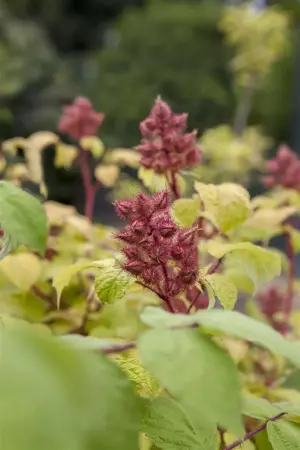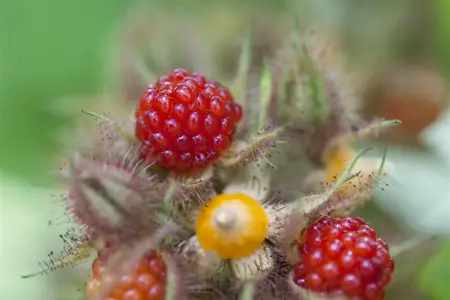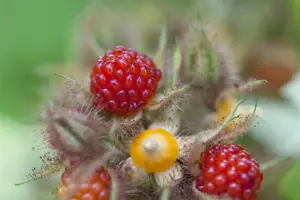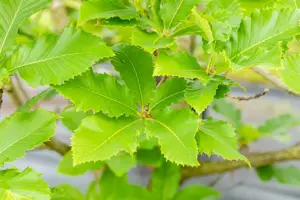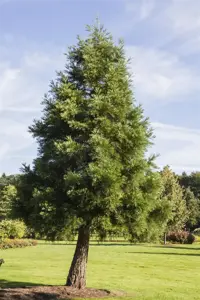Rubus phoenicolasius - 2 Ltr, single cane
Rubus phoenicolasius - 2 Ltr, single cane
Bulletpoints
* Fruit jewellery
* aromatic, sweet and sour flavour
* the flowers are highly favoured by bees, bumblebees and hoverflies
* easy to care for
Bark
Red-brown bark makes this plant an eye-catcher in any garden.
Growth habit
Wineberry is an overhanging shrub that can reach a height of 2 - 3 metres and a width of 1.5 - 3 metres.
Water
The plant needs plenty of water. Do not allow the soil to dry out.
Location
Preferred location in semi-shady to shady position.
Soil
Rubus phoenicolasius prefers nutrient-rich, sufficiently moist soil.
Planting time
Container plants can be planted all year round, except when the soil is frozen and in summer heat (over 30°C).
Tasks
- Fertilise: In the period from March to April
- Watering: In the period from May to September
- Pruning: From February to the beginning of March.
Care
- A slow-release fertiliser can be used in spring. This releases the nutrients slowly and continuously so that the plant is evenly supplied over a longer period of time.
- Watering less frequently, but thoroughly and thoroughly, encourages the plant roots to penetrate deeper into the soil. This enables the plant to survive dry periods better.
Flower
Rubus phoenicolasius forms cup-shaped, light pink-coloured flowers arranged in clusters from June.
fruit
The orange-red, round fruits of Rubus phoenicolasius are particularly decorative. These appear from July.
Use
Farm garden, fresh consumption, bee pasture, bird food plant, jam
Shoots
The shoots of Rubus phoenicolasius are spiny.
Root
Rubus phoenicolasius is a shallow-rooted plant and, depending on the soil, forms runner-forming roots.
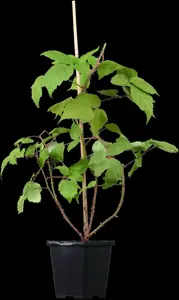
- Article number1000
-
EAN codeRUPHOENI-2C21S
- Latin nameRubus phoenicolasius
- catalogLandscape shop



